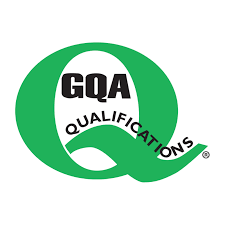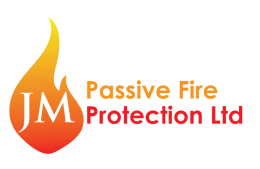
Meet your tutor Clare! She has just celebrated her 2 year work anniversary at the company and has brought a wealth of experience to supporting our learners that attend the academy.
Clare has taught in primary schools across Liverpool for almost twenty years and became interested in helping young people who were facing difficulties in a variety of capacities to overcome challenges. She gained a vast amount of experience supporting young people and adults who had faced trauma, either in childhood or adulthood and found ways to offer support that would help them with their learning and ultimately into employment.
Now working at JM Academy training and filling skills gaps. She offers training and development to those already working within the Passive Fire Protection industry who would like to gain a deeper understanding and gain a qualification or upskill. Clare also helps anyone new to the sector to develop their knowledge, skills and understanding and source employment. We work with NEET individuals sourcing the right training and employability skills for them and help them into the world of work.
Clare’s qualifications include BA QTS HONS English Literature and Education, Mental health first aid, First Aid at Work, Independent Fire Training Fire Stopping Course and ABBE levels 2 and 3 in Fire Risk Assessment.
The demand for competent and skilled workers in passive fire protection has risen sharply recently due to regulatory changes. Therefore, the demand for high-quality training has also risen. In previous times, companies have asked for a minimum of NVQ Level 2 for all those wishing to work within the industry. To complete a level 2, a minimum of two years of experience is required. This has brought difficulties to many, as gaining the experience on-site without a level 2 is impossible.
Here at JM Academy, we offer a level 1 course to help learners begin their journey in passive fire protection. The course offers both theoretical and practical knowledge to equip candidates with the knowledge, skills and experience to succeed in this life-saving sector of construction.
All learners complete their training provided with a clear progression of the route they need to take going forward into NVQ level 2 and beyond. We also offer advice around third-party certification.
Our level 1 course covers:
- Compartmentation
- Intumescent products/manufacturers’ guidance and data sheets
- Historical fires
- Fire behaviour
- Human behaviour in a fire situation relating to Fire Risk Assessments
- Passive fire specifications and installations
- Compliance and regulations
- Third-party certification
- Fault spotting and corrective

Here at the JM Training Academy we pride ourselves in delivering the highest quality training to all students that walk through the door. One of the FULLY FUNDED courses we offer is the L1 CSCS Green Card, for the accreditation we proudly use GQA.
GQA Qualifications Limited is an Awarding Body for specialist sectors and occupational roles. Our current qualifications cover 17 sectors including the Glass and Fenestration Industries, Construction, Print, Automotive Glazing, Polymers, Nuclear, Chimney Occupations, Paper, Meteorology and Print.
Their aim is to work only with industries where they have access to knowledge within GQA, giving us a real ability to discuss specific qualifications with both centres and employers.
Qualification development is carried out in accordance with regulatory and Sector Skill Council requirements, using industry experts throughout the development and consultation processes.
If you want more information on how GQA works, you can click here.


Passive Fire Protection (PFP) training covers the strategies, systems, and materials used in construction and building maintenance to prevent or limit the spread of fire and all of it’s by-products. Unlike active fire protection systems, such as sprinklers and fire alarms, passive fire protection measures are built into the structure and work without human or mechanical activation. Here’s a breakdown of what typical passive fire protection training might cover:
1. Overview of Passive Fire Protection
- Definition of PFP: Understanding what passive fire protection is and how it differs from active fire protection.
- Purpose: Reducing fire damage, protecting building occupants, and allowing for safe evacuation by focusing on compartmentation.
- Regulatory Requirements: Familiarisation with local and national fire safety codes, standards and regulations.
2. Key Components of Passive Fire Protection
- Fire-Resistant Walls and Floors: Knowledge of fire-rated barriers and the materials used to construct them, such as fire-resistant drywall, concrete, and special coatings.
- Fire Doors and Dampers: Training on the types of fire doors, their ratings, proper installation, and maintenance. Fire dampers in ductwork and air passageways to prevent fire and smoke from spreading through ventilation systems.
- Fireproofing Materials: Use of fire-resistant materials like intumescent coatings, cementitious fireproofing, and fire-resistant spray foam for structural protection.
- Compartmentalisation: Creating compartments in buildings to contain fire and smoke, preventing them from spreading to other areas.
- Fire Stopping: Techniques and materials used to seal gaps and penetrations in walls and floors, such as fire-rated caulks and sealants.
3. PFP Systems Design and Implementation
- Design Principles: Understanding of how passive fire protection is integrated into building design.
- System Installation: Installation best practices for fire-resistance-rated walls, ceilings, and other PFP systems.
- Inspection and Testing: Knowledge of inspection protocols to ensure that PFP measures are correctly installed and functional.
4. Fire Dynamics and Material Behaviour
- Fire Behaviour: Basic understanding of fire dynamics, including how fires spread and the influence of different building materials.
- Material Performance Under Fire And Testing Facilities: Studying how different materials react to high temperatures, and selecting materials for specific fire resistance requirements.
5. Inspection Procedures
- Inspection Techniques: Identifying common areas where passive fire protection can be compromised, such as damaged fire doors, unsealed penetrations, and faulty fireproofing materials.
6. Documentation and Compliance
- Recordkeeping: How to document inspections, maintenance, and repairs of passive fire protection systems.
- Compliance with Standards: Ensuring ongoing compliance with fire codes, insurance requirements, and building regulations through routine documentation and reporting.
7. Hands-On Training
- Mock Inspections: Practicing the inspection of PFP installations, including identifying breaches in fire barriers or improperly installed fire doors.
- Material Application Techniques: Applying fireproof coatings and installing fire-stopping materials in a supervised setting.
9. Case Studies and Lessons Learned
- Real-World Incidents: Analyzing case studies of past fire incidents to understand the role of passive fire protection in preventing or mitigating damage.
- Lessons Learned: Reviewing common issues or failures in passive fire protection and how to avoid them in practice.
JM Passive Fire Protection training is essential for architects, engineers, building inspectors, labourers, general operatives and maintenance personnel to ensure that structures meet safety standards and effectively protect occupants and assets.
For further information on the courses we have available here at the JM Training Academy, please complete the form below and one of our team will be in touch.
